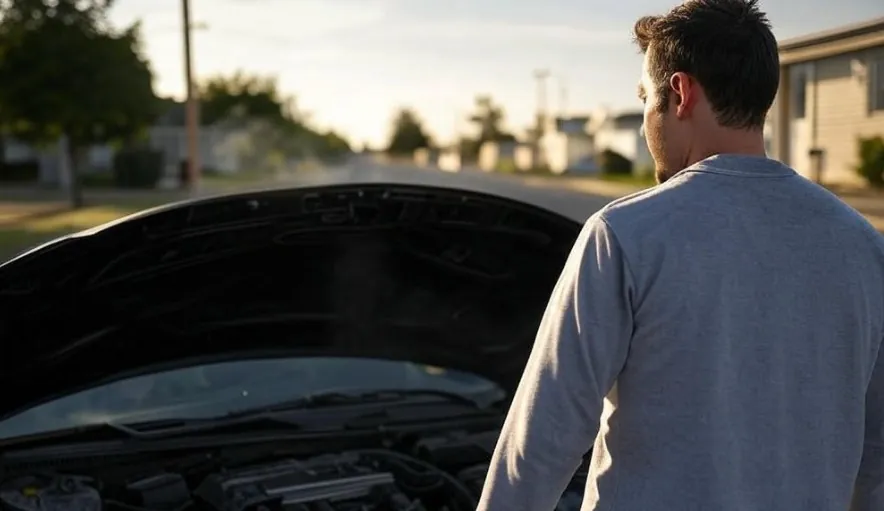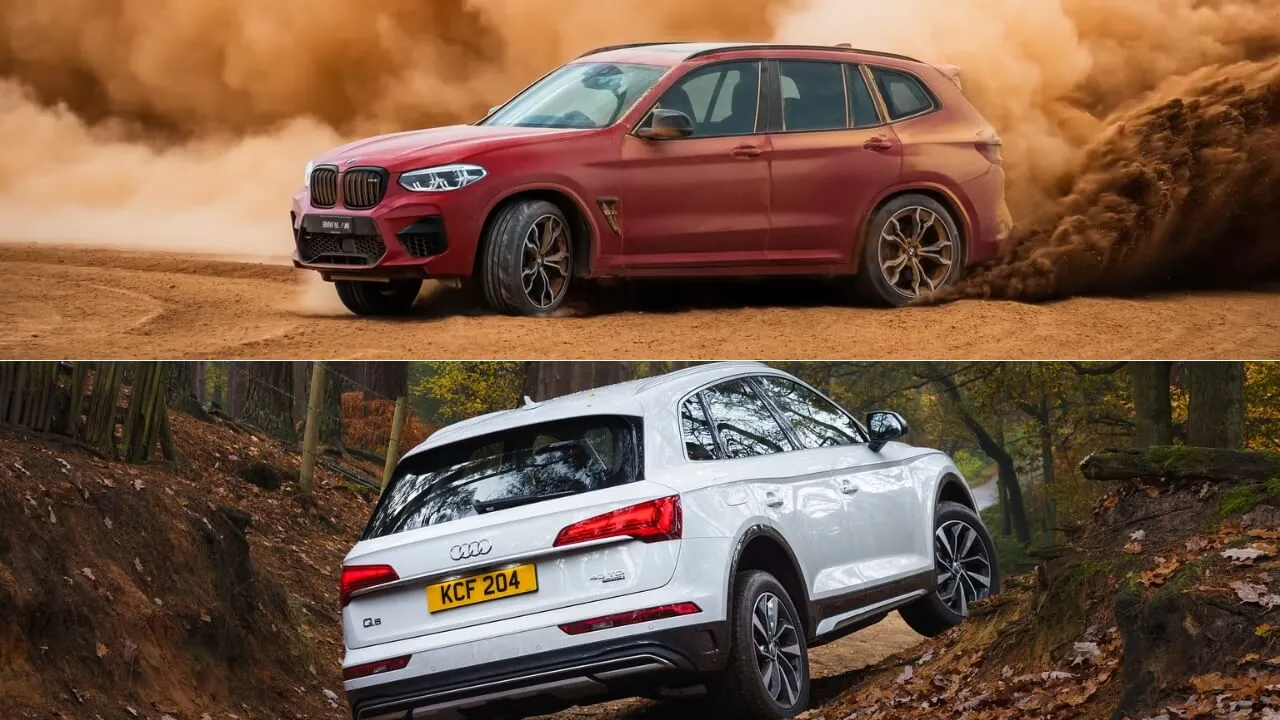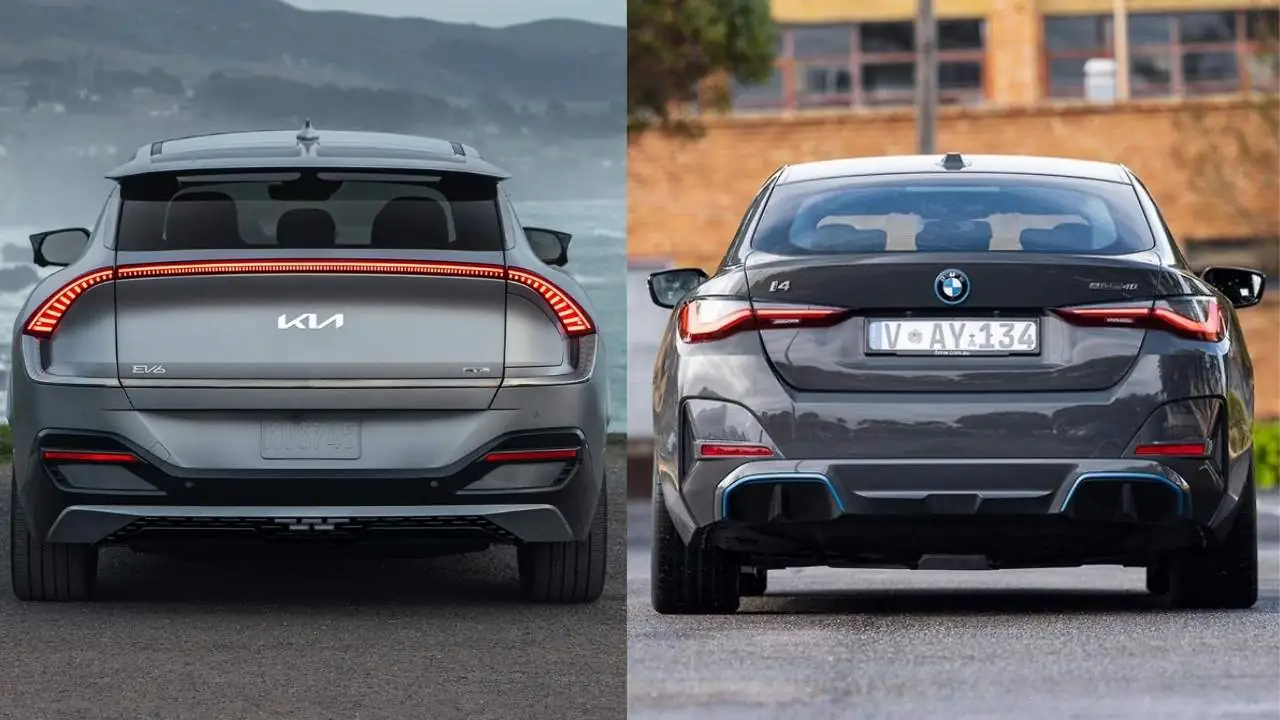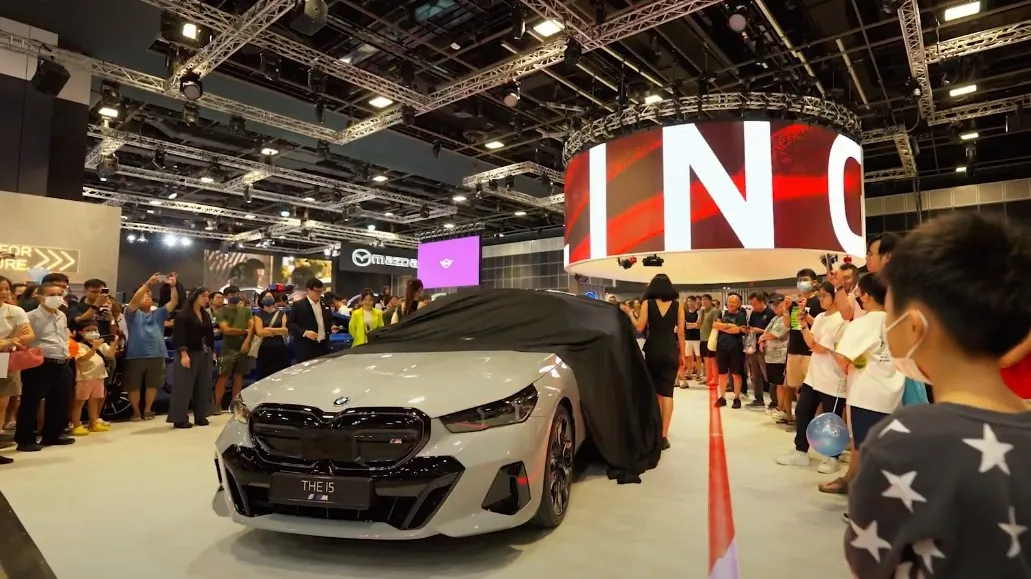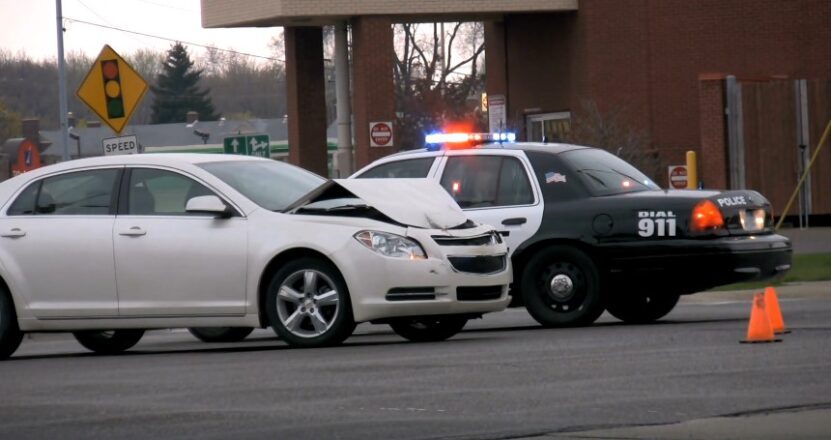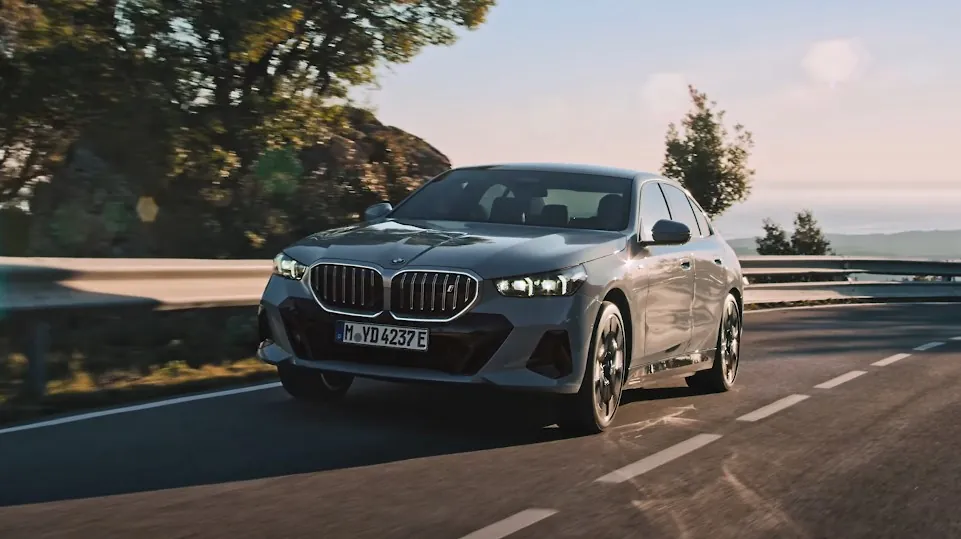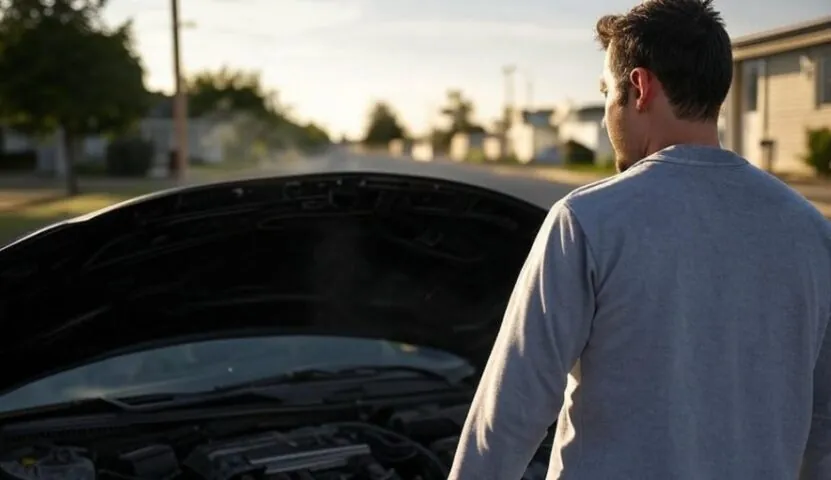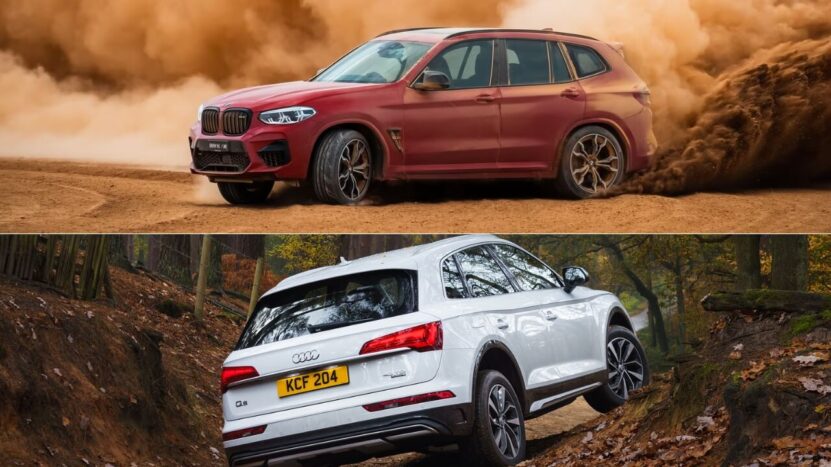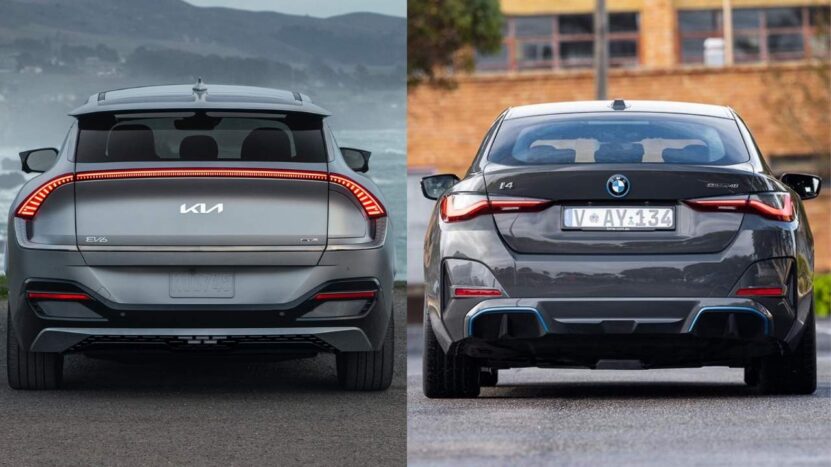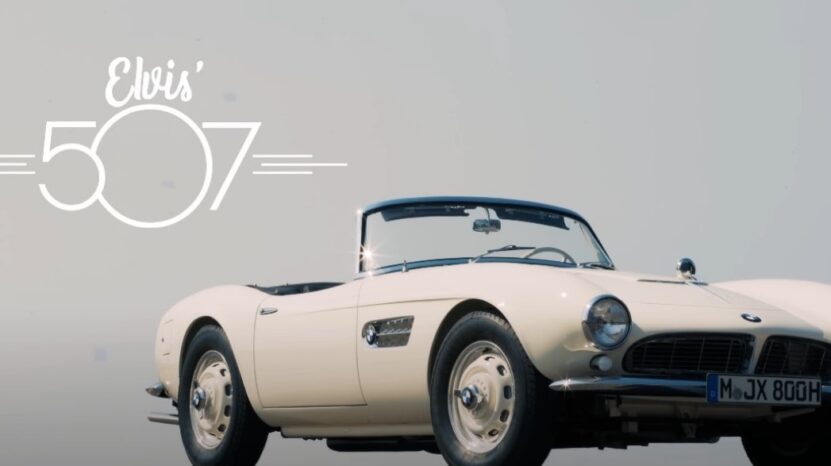
Share Post:
It was 1968, and Elvis Presley hadn’t had a Number One hit in six years. The King of Rock and Roll was only 32, but he’d lost his edge making cheesy Hollywood movies and subpar albums, and the world had moved on. And then, just before the year ended, a TV special called simply Elvis saw him return to form, playing stripped-down rock and roll in front of a live audience. Elvis Presley had made his comeback.
The same year that Elvis aired, the 507 he’d owned during his Army stint in Germany left Arizona for California. It had been purchased by Jack Castor, an aerospace engineer about Elvis’ age who’d been dreaming of a 507 since seeing one while working a summer job at Suddeutsche Bremsen in Munich…at almost the exact same time that U.S. Army Private Elvis Presley was driving around Frankfurt in the very car that Castor now owned.
By the time Castor bought it, however, 507 number 70079 was barely recognizable, having fallen victim to a hot-rodding DJ in Alabama just as Elvis was scoring his last hit record. Castor wanted to put it back to stock, to have a real 507 instead of one crammed with a Chevy V8 and lurid tuck-and-roll upholstery, so he stashed it in a warehouse and started gathering up the parts for a full restoration. Alas, other things took precedence, and for a while it seemed like Elvis’ 507 might suffer a fate as ignominious as that of Presley himself.
Fortunately, F. Scott Fitzgerald was wrong: Plenty of American acts have second lives. Elvis proved as much following his comeback and even in posterity, and now Elvis’ 507 is making a comeback of its own. For the last two years, the car has been at BMW Classic in Munich, undergoing restoration to its original specification. It was one of Castor’s last wishes before his death in November 2014, and when it crosses the dais at the 2016 Pebble Beach Concours d’Elegance it will do so in tribute not only to Elvis but also in honor of Jack Castor, who kept it for more than 45 years in anticipation of just such a revival.
That revival began in December 2006, when we published a Back Page in Bimmer #63 entitled “Royal Coach.” We’d been cross-referencing various sources against Dr. Karlheinz Lange’s definitive model history, The legendary 507, and it had become obvious that Elvis’ car wasn’t 70192 as was often claimed but 70079, the first 507 raced by Hans Stuck. As it turned out, 70079 was just down the road from Bimmer HQ, stored in a warehouse near Pescadero, California. Its owner, Jack Castor, wasn’t making any definitive claims for an Elvis provenance, but he was certain it was the ex-Stuck factory racer.
The story that we published in Bimmer #85, June 2009, recounted as much as we knew of 70079’s history at the time. Since then, we’ve learned quite a bit more about the most significant 507 of them all.
Table of Contents
ToggleThe ’50s: With Hans Stuck and Elvis Presley
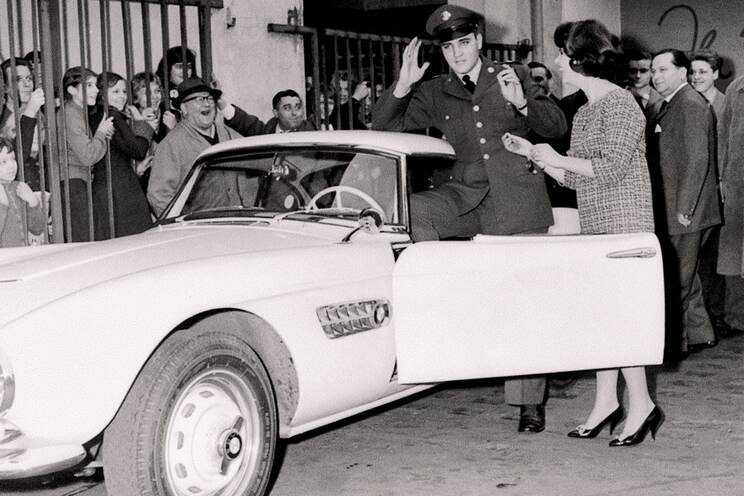
First, a few facts. 507 #70079 left BMW’s Munich factory on September 13, 1957, painted Feather White with a Black leather interior and optioned with a Becker Mexico radio, Rudge knock-off wheels, the removable hardtop and a lighted “D” over its rear bumper, signifying a German registration.
The car went straight from the factory to the Frankfurt auto show, but not to BMW’s show stand. Instead, it remained outside the hall, demonstrating the 507’s performance. It continued in that role once the show was over, driven by Hans Stuck, Sr. and by journalists for reviews. Stuck also raced it in a few hillclimbs in 1958, winning the GT class at Rossfeld on May 11, at Schauinsland on July 27, and at Ollon-Villars on August 31.
507 #70079 also played a supporting role in Hula-Hopp Conny, a teen movie produced by Bavaria Filmstudios and released in March 1959. (Castor used the film to determine 70079’s original specification, concluding that the car had a black interior rather than the more common red.)
Heavy use meant that 70079 was subject to a few repairs—bodywork, paint, a new windshield and gearbox and an engine overhaul—during its time as a factory demonstrator/race car. That period ended on December 12, 1958, when it was delivered to Autohaus Wirth in Frankfurt. Eight days later, Elvis Presley took it for a test drive, which proved satisfactory enough that the car became his before the end of 1958. Because Elvis was stationed in Frankfurt with the U.S. Army, 70079 was registered under U.S Armed Forces plates for 1958 and 1959.
Sometime in 1959, 70079 received its first coat of red paint, applied to better conceal the lipstick marks being left by female fans while the car was parked around Bad Nauheim, where Elvis lived.
Elvis was discharged from the U.S. Army on March 2, 1960. He and the 507 returned to the U.S., but there’s no record of whether Elvis himself imported it—as a service member, he would’ve been able to do so easily, but those U.S. Army records no longer exist.
The early ’60s: 70079 is butchered in Birmingham
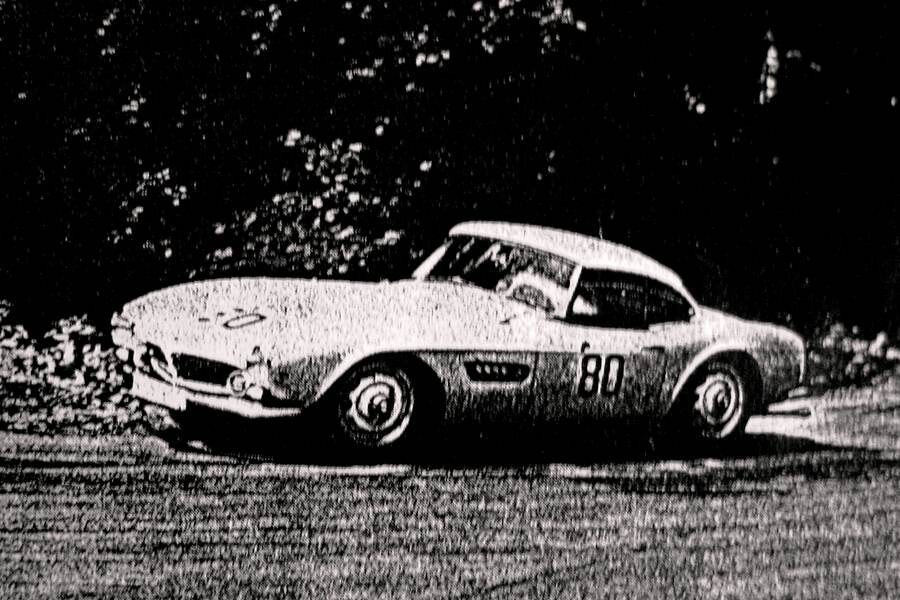
The car disappears, effectively, until 1962, when a newspaper in Birmingham, Alabama reported that a radio personality named Tommy Charles owned a BMW 507 that he’d bought from a Chrysler dealer in New York City who told him it was Elvis’ car. The same story was repeated in Road&Track, which showed the 507 as modified by Charles with a Chevy V8 and a custom interior.
Curiously, the guy who owned Elvis’ 507 staged a public immolation of Beatles records in 1966, following John Lennon’s proclamation that the Beatles were “bigger than Jesus.” So noted Charles’ 1996 obituary in the Tuscaloosa News following his death at 66 after undergoing open-heart surgery in Birmingham; the News also noted that he was “irascible, opinionated, crass, humorous, intelligent and well-spoken.” He was also a car guy: In 1967, he opened Tommy Charles Imported Cars in Birmingham. That shop specialized in Triumphs, but Charles also owned a BMW 2002 that Lee Hurley had customized with a V6 engine from a 1987 Buick Regal Grand National.
We don’t know when Charles sold the 507, but Bimmer reader Jim Hulsey told us he’d seen the car in late 1965 or early 1966 at RBM Motors in Atlanta, Georgia, where he was working in the parts department. “The car had a small-block 327 engine and a four-speed transmission,” Hulsey said, and could have been his for $1,000. A 20-year-old newlywed who was on the verge of being drafted and sent to Viet Nam, Hulsey could only dream about that hot rod 507.
Lloyd “Dick” Cottle, on the other hand, had the resources to do more than dream. A fighter pilot in the Air Force, he’d been stationed in Germany in 1966, and he came back to the U.S. with a BMW 1800 ti and a Ferrari 250 GTE. He broke the BMW’s driveshaft almost immediately upon his return, drag-racing a Chevy, and he was towing it behind the Ferrari on his way to Craig AFB near Selma, Alabama when he stopped in Atlanta to get parts from the BMW dealership. (That should have been Global Imports, not RBM, an inconsistency we can’t resolve.)
Cottle told the salesman that he was thinking of replacing the Ferrari’s drivetrain with Chevy parts. The salesman told him that was a ridiculous idea, and said that if he wanted a European car with an American drivetrain he should just buy the 507 they had in the basement. That car was 70079, which Cottle vaguely remembered having read about in Road&Track. The salesman never mentioned Elvis.
The late ’60s: 70079 heads west
Cottle traded the Ferrari for the 507 and $1,500, then drove it to Selma (with the alignment off and the car pulling to one side) before shipping out to Viet Nam. When he returned in the fall of 1967, he picked up the car and drove it to his new posting at Williams AFB near Chandler, Arizona. On that drive, Cottle says, the soft top leaked when it rained, 70079’s optional hardtop having disappeared by then. (Castor purchased another.)
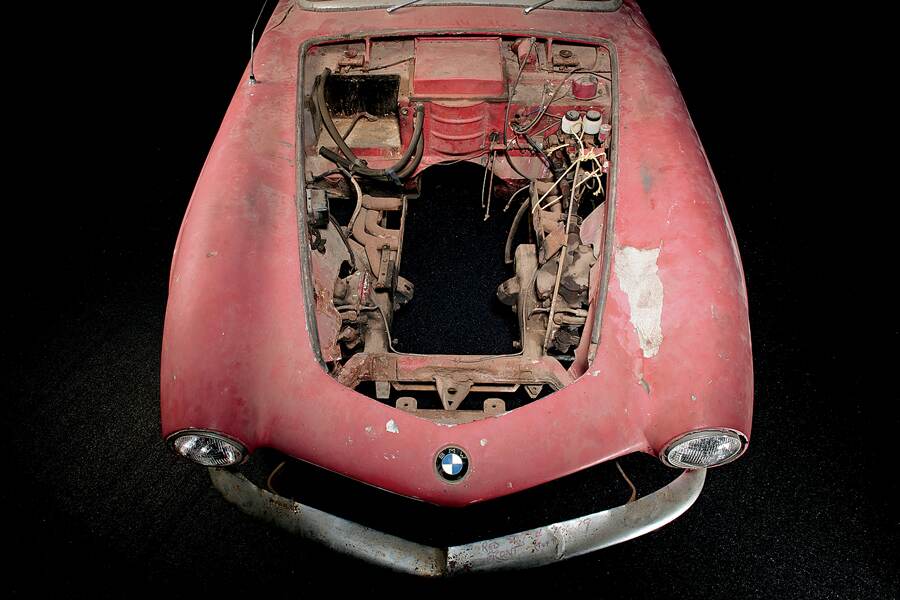
Cottle told us that the roads around Chandler were so rough that GM used them to test the ride quality of its cars, and that the 507 was all but undrivable on the concrete surfaces. The brakes were terrible, too—Cottle says the car would barely stop, so he took it to the new BMW dealership in Mesa to have them fixed. That took almost a month and cost Cottle $400, which made him realize he couldn’t afford to keep 70079. He tried to exchange the 507 and a ’67 Corvette for a Shelby Cobra, but the local Ford dealer rejected the BMW.
In 1968, Cottle advertised the car for sale in AutoWeek and got two calls. One was from Tom Barrett of Barrett-Jackson auctions; when Cottle told him the 507 had a Chevy drivetrain, Barrett simply hung up. The other was from an aerospace engineer named Jack Castor, who flew to Phoenix from San Francisco after Cottle offered to pay his return air fare back if Castor didn’t like the 507. Castor liked it enough to buy it, and he drove it home to Palo Alto on a tankful of gas that Cottle had purchased on March 3, 1968.
Castor drove it for about five or six years with its Chevy drivetrain, then put it aside with the intention of returning it to as-stock condition. As a template for that restoration, Jack and his brother, Tom, bought 507 #70089, which was later discovered to have raced against 70079 when both were new.
He gathered up all the necessary parts for a restoration, and he documented its history extensively. He’d put together an impressive dossier on the car by the time we started corresponding in September 2008, after he’d seen our inquiry about 70079 in Bimmer #63.
Despite his extensive research, Castor hadn’t been able to establish an Elvis connection with any certainty even after chasing leads in both Germany and the U.S. Beyond establishing the car’s true provenance, Castor didn’t seem to care much about the Elvis connection; he considered the Hans Stuck racing provenance more important.
That’s arguably true, but the Elvis connection is what gives this car is extraordinary value. It’s also what set off a flurry of interest in the car in the wake of the article we published in Bimmer #85, October 2009.
2009-’14: 70079 is back in the limelight
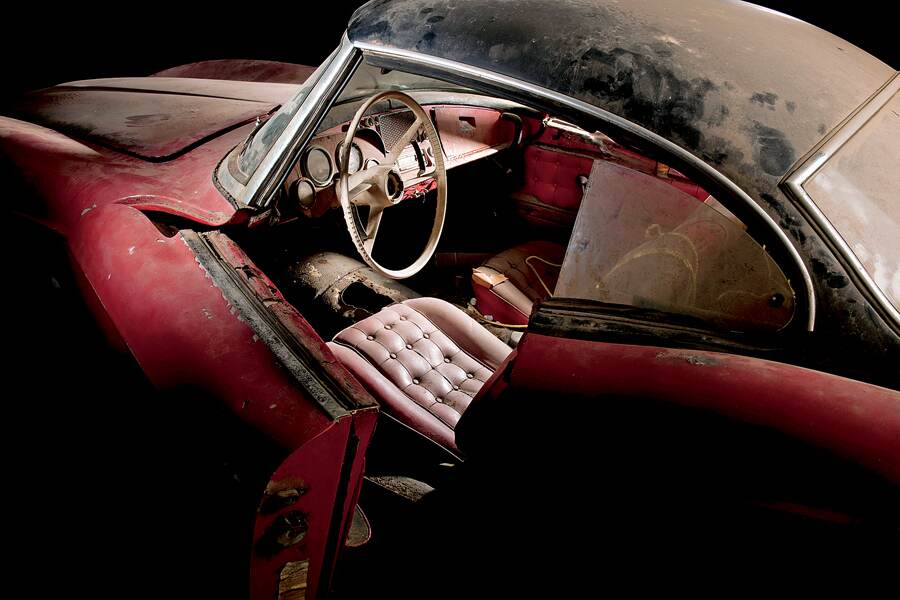
In November 2009, AutoBild Klassik writer Thomas Wirth and photographer Hardy Mutschler came to California to see 70079, accompanied by BMW Classic’s Manfred Grunert. Their article led a number of potential buyers and restorers to Jack’s door from Germany, some to explore the prospect of buying 70079 outright and others to offer their restoration services or key components.
Castor didn’t turn anyone away—he enjoyed the company of fellow enthusiasts, for sure—but neither did he have any intention of selling. As Castor told us, he didn’t care about money but liked having stuff, specifically the cars, motorcycles and bicycles that interested him.
“Jack was a real car guy,” says Mutschler, who visited Castor every year or so after the AutoBild Klassik article ran, sometimes bringing his young son along. “He wasn’t just a crazy collector of cars, bicycles and other stuff—he drove his cars, or at least some of them. I’ve been hanging around the classic car scene for the last 30 years, and I haven’t met many people using a patina’d California Spyder as a daily driver. He lived for that thing—that was the difference between Jack and other collectors. It’s easy to be a big car collector if you have lots of money, but I think the only riches Jack had were his cars.”
Unfortunately, a ground-up restoration of 70079 would run well into six figures, which Jack didn’t have. He toyed with selling his Ferrari, but when another LWB Cal Spyder failed to bring a good price at auction he decided to keep it. He still drove it regularly, after all, as he did his Kaiser Traveler and his other cars and motorcycles, all of which were collectible on some level.
He’d been negotiating with BMW Classic for the car’s restoration since meeting with Grunert in late 2009, but coming to an agreement proved nettlesome. It became a matter of some urgency in 2011, when Jack had a massive heart attack. That came as a shock to all who knew him, and to Castor himself. “I think Jack expected to live for 200 years,” Mutschler says. Jack was an avid bicyclist who’d twice held the speed record for crossing the U.S. on a high-wheeler or penny farthing; a video on YouTube shows him crashing one quite spectacularly. He was 75 years old in 2011, and the event prompted him to get his affairs in order with respect to his car collection.
Both Jack and BMW Classic were keen to make sure that 70079 didn’t disappear into a collector’s garage. It belonged with BMW, just like the 1940 Mille Miglia-winning 328 Coupe that BMW had purchased from Jim Proffitt in September 2002.
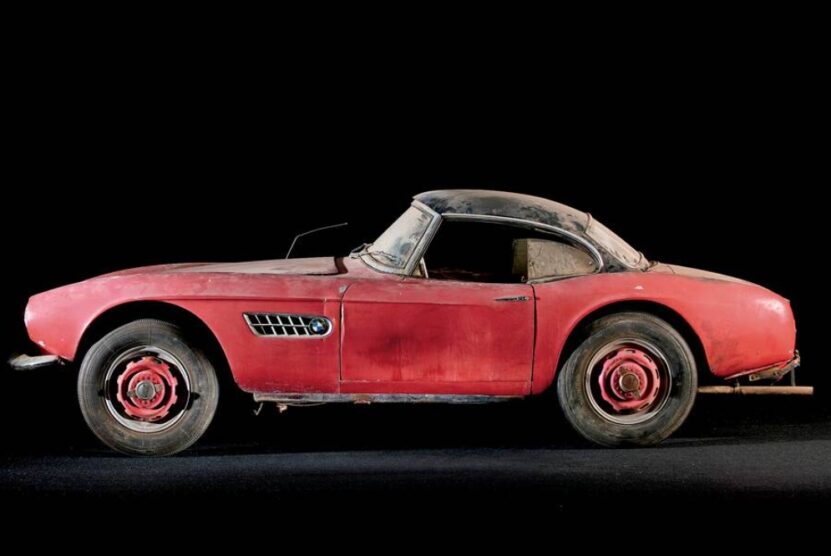
But Jack liked owning it—who wouldn’t want to be the guy who owned Elvis’ 507? Ultimately, BMW Classic agreed to restore both of Jack’s 507s, the ex-Stuck/Elvis 70079 and the ex-Helm Glöckler 70089, after which 70089 would go back to Castor in California while 70079 remained on permanent loan to BMW Classic, to be displayed in the Museum and taken out for special events. In the summer of 2014, a team from BMW Classic flew to San Francisco to gather up both cars and their attendant parts and load them on a plane to Munich.
With that, the California idyll of 70079 came to a close.
Jack Castor came to Pebble Beach that summer, but he wasn’t well. He died a few months later, on November 4, 2014, at the age of 77.
2014-’16: 70079 returns to Munich…and BMW
Upon landing in Munich, 70079 went straight to the BMW Museum, where it would be shown throughout the summer in unrestored condition, just as we’d found it in 2009 when we pulled the tarp off it in Pescadero. Both of the 507s had been moved into more secure storage not long afterward, but by then they’d spent decades exposed to the foggy climate of the California coast.
In the warehouse, 70079 hadn’t looked that bad—at least its bodywork was all there, if not the original interior or drivetrain—but it looked considerably worse under the harsh glare of the BMW Museum’s spotlights.
As BMW Classic notes on its website, “While the sports car was greeted by excited faces among the audience, many were also rather taken aback by its sorry, bedraggled condition. There was a similar response from the experts at BMW Group Classic when they took a closer look at the car for the first time as part of the assessment process.”
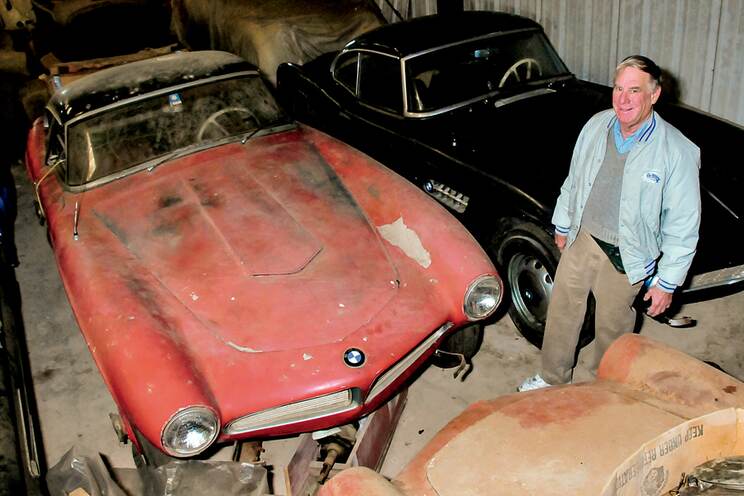
Although they concluded that much of the car constituted “high-class scrap,” the originality of the metalwork, including the hood and doors was established right down to the serial number. What hadn’t been thrown away by Tommy Charles was still original, a huge bonus in a car that’s been through so much.
When we inspected 70079’s frame rails in 2009, looking for the car’s chassis number, we saw multiple layers of paint beyond the red-over-white that it had received during Elvis’ tenure. Black and blue were visible, too, though blue was not among those colors confirmed by the BASF paint experts consulted by BMW Classic prior to restoration.
“The paint inspection undertaken by experts from BASF revealed some interesting goings-on beneath the surface,” BMW notes, “The car’s color scheme was shown to consist of eight coats of paint in total (cream, white, red, black, red and red again), garnering some quizzical looks among the assembled experts.”
Feather White was original, and we know the car was repainted in white before delivery to Elvis, then painted red while Elvis owned it. Who painted it black remains a mystery, though we suspect it was Tommy Charles, who probably applied its final coats of red, too, during the hot-rod process. In any case, Cottle never painted it, and neither did Castor. When Castor bought it, it was still bearing a 1968 Alabama license plate.
Complete disassembly took about a week rather than the usual two days thanks to the extra care required by the 507’s aluminum bodywork, which was riveted to the sheet steel chassis. A chemical bath and high-pressure cleaning removed paint, filler and other coatings from the metalwork, and a phosphoric derusting bath took care of corrosion.
The car’s original dashboard was missing, so BMW Classic cast a new one. The missing V8 engine, meanwhile, was built up from scratch to produce 150 hp from 3.2 liters just as it had in 1957.
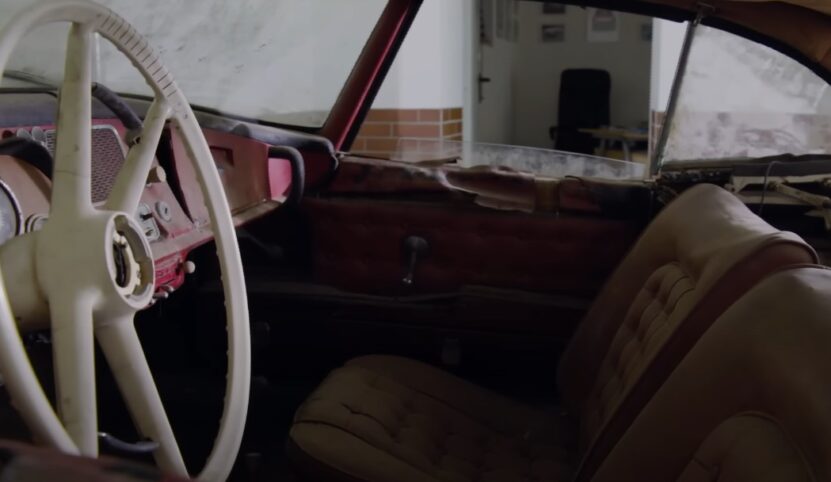
Next, the bare-metal underbody structure of the car was restored. This included the manufacture of a new front clip, the old one having been removed for the installation of the Chevy V8. Other areas of the underbody had to be remanufactured because rust had eaten them away; this area needed to be as solid as possible since everything else (drivetrain, suspension, axles, etc.) would be bolted to it. Finally, the team recreated the wooden panel that sits between the seats and keeps the soft top in place.
As this issue went to press, all of the metal parts had been rust-protected but the car hadn’t received its finish coats of paint, nor had the engine, interior or any brightwork been installed. All of that was slated to be finished over the summer, just in time for 70079 (and 70089, which is being restored alongside it) to be flown to Monterey for its comeback at Pebble Beach.
There, the car is being presented as the Elvis 507, which makes sense given that its provenance as such makes it the most significant of all 507s, and probably the most significant BMW of the postwar era. For Castor, however, the car’s racing history with Hans Stuck was more compelling, and he’d intended to restore it to its original condition as a factory demonstrator/racer. As per Jack’s wishes, BMW Classic is indeed restoring the car to its original specification.
Also as per Castor’s wishes, the contract with BMW was amended in September 2014 to transfer 70079 to BMW’s ownership upon Jack’s death. That means 70079 will remain in the public eye in perpetuity, enjoying a post-comeback career worthy of Elvis’ posthumous popularity.



